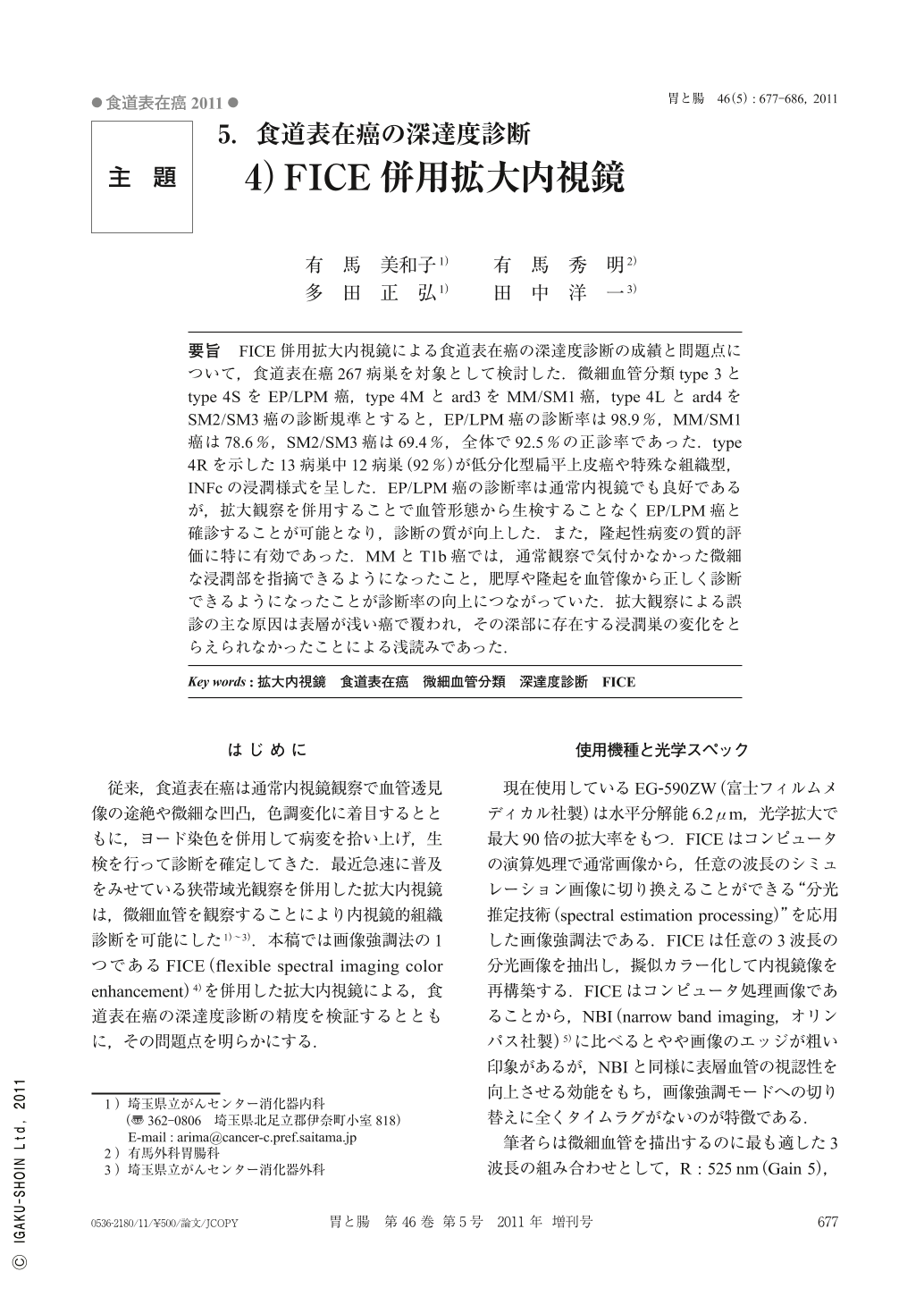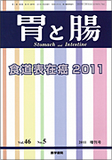Japanese
English
- 有料閲覧
- Abstract 文献概要
- 1ページ目 Look Inside
- 参考文献 Reference
- サイト内被引用 Cited by
要旨 FICE併用拡大内視鏡による食道表在癌の深達度診断の成績と問題点について,食道表在癌267病巣を対象として検討した.微細血管分類type 3とtype 4SをEP/LPM癌,type 4Mとard3をMM/SM1癌,type 4Lとard4をSM2/SM3癌の診断規準とすると,EP/LPM癌の診断率は98.9%,MM/SM1癌は78.6%,SM2/SM3癌は69.4%,全体で92.5%の正診率であった.type 4Rを示した13病巣中12病巣(92%)が低分化型扁平上皮癌や特殊な組織型,INFcの浸潤様式を呈した.EP/LPM癌の診断率は通常内視鏡でも良好であるが,拡大観察を併用することで血管形態から生検することなくEP/LPM癌と確診することが可能となり,診断の質が向上した.また,隆起性病変の質的評価に特に有効であった.MMとT1b癌では,通常観察で気付かなかった微細な浸潤部を指摘できるようになったこと,肥厚や隆起を血管像から正しく診断できるようになったことが診断率の向上につながっていた.拡大観察による誤診の主な原因は表層が浅い癌で覆われ,その深部に存在する浸潤巣の変化をとらえられなかったことによる浅読みであった.
We examined the results and problems involved in diagnosis of the invasion depth of superficial esophageal cancer on the basis of magnifying endoscopy obtained with FICE. A total of 267 lesions of superficial esophageal cancers were studied. When type 3 and type 4S vessels were considered the diagnostic criteria for EP/LPM cancer, type 4M and ard3 vessels for MM/SM1 cancer, and type 4L and ard4 vessels for SM2/SM3 cancer, the rate of correct diagnosis was 98.9% for EP/LPM cancer, 78.6% for MM/SM1 cancer, and 69.4% for SM2/SM3 cancer, and the overall accuracy rate was 92.5%. 12 of 13 lesions(92%)with type 4R vessels were found in poorly differentiated carcinomas, specific histologic types of carcinoma, and lesions showing INFc infiltrative patterns. Diagnostic accuracy rate of conventional endoscopiy for EP/LPM cancers is very high, but magnifying endoscopy permits a high proportion of EP/LPM cancers to be accurately diagnosed on the basis of vascular patterns, without performing biopsy, so magnifying endoscopy has thus improved diagnostic accuracy. Magnifying endoscopy allowed minute invasion to be more precisely estimated, previously not possible by conventional endoscopy. It has also enabled the evaluation of the depth and the invasion pattern of the thickned and the elevated area basis on the vascular patterns, thereby improving diagnostic accuracy for MM or T1b cancers. Misdiagnosis was caused by tumors that were covered with shallow superficial layers of cancer cells, overlying deeper areas of invasive nodular foci.

Copyright © 2011, Igaku-Shoin Ltd. All rights reserved.


